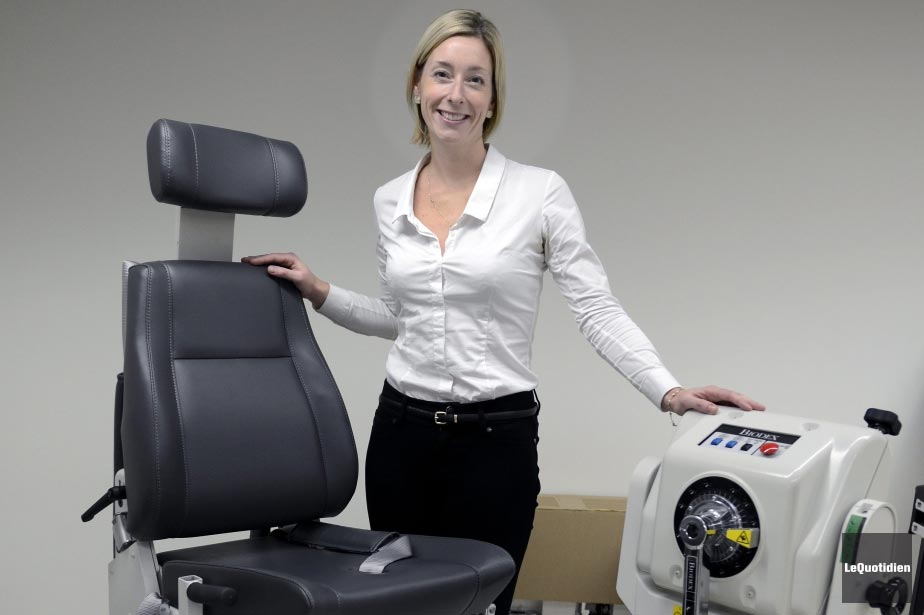|

Élise Duchesne, research professor in physiotherapy at UQAC, conducts research aimed at improving the quality
of life of people with type 1, a neuromuscular disease myotonic dystrophy.
The prevalence of the disease, the proportion of people in the population, is actually 16 times higher in the region.
Myotonic dystrophy type 1 particularly affects the muscular system. This atrophy, resulting in a loss of muscle strength of 1 to 3% a year, says Dr. Duchesne met by The Daily Pavilion of the Grand Seminary of UQAC.
"This can be a significant loss of muscle strength by 30% over 10 years, she says. [...] The completion of daily tasks is affected, as is the quality of life."
Until now, it was observed that physical exercise is beneficial for people with the disease. But research has yet to establish why and how.
This is what Elise Duchesne looks since March. His research aims to understand the reaction to the training of muscles of patients with myotonic dystrophy type 1.
"The goal is then to develop interventions that will stop the loss of muscle strength,"
says Dr. Duchesne.
Two studies
Two studies will be conducted in partnership with a German researcher from the Ludwig-Maximilians University of Munich. "There are very few researchers in the world on myotonic dystrophy type 1, so we have every interest in working together," says the young researcher who is established in the region for three years after completing his studies University in Quebec City. Research projects are also conducted in partnership are also in partnership with the Interdisciplinary Research Group on neuromuscular diseases.
The first study will investigate the muscle at the fundamental level. Twenty patients (10 here and 10 in Germany) will take part in the study with an isokinetic device, the Biodex. This device, which can precisely measure the strength of a patient, is used primarily for teaching physiotherapy students.
The second study will focus on a longer-term training. The twenty Study participants will perform gym exercises at a rate of twice a week, for three months. "We will thus be able to measure the impact of chronic training on patients with this second study," says Elise Duchesne.
In both cases, a muscle biopsy is then performed on participants to study the reaction of the muscle during training.
Training programs
Following this research, training programs can be developed for people with myotonic
dystrophy type 1.
The results will determine precisely the type of exercise to perform, their frequency and their adaptation to the reality of each patient to improve their quality of life.
After processing the basic sciences department and the department of arts and letters, will be discussed in November in the health sciences department of the Université du Québec à Chicoutimi (UQAC).
|